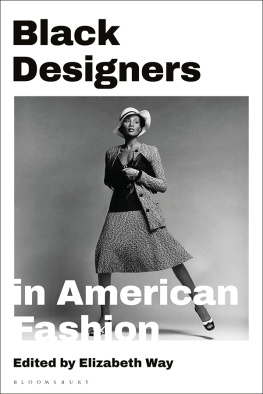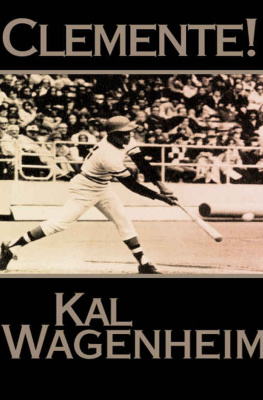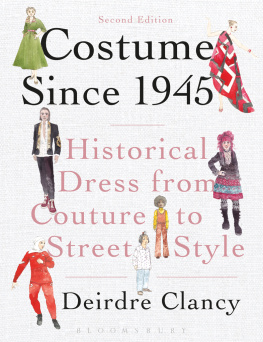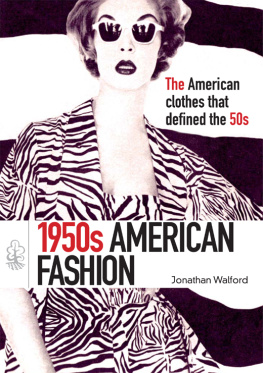Dress Casual
GENDER AND AMERICAN CULTURE
Coeditors
Thadious M. Davis
Mary Kelley
Editorial Advisory Board
Nancy Cott
Jane Sherron De Hart
John DEmilio
Linda K. Kerber
Annelise Orleck
Nell Irvin Painter
Janice Radway
Robert Reid-Pharr
Noliwe Rooks
Barbara Sicherman
Cheryl Wall
Emerita Board Members
Cathy N. Davidson
Sara Evans
Annette Kolodny
Wendy Martin
A complete list of books published in Gender and American Culture is available at www.uncpress.unc.edu.
2014 The University of North Carolina Press
All rights reserved
Manufactured in the United States of America
Set in Utopia by codeMantra.
The paper in this book meets the guidelines for permanence and durability of the Committee on Production Guidelines for Book Longevity of the Council on Library Resources. The University of North Carolina Press has been a member of the Green Press Initiative since 2003.
Complete cataloging information for this title is available from the Library of Congress.
978-1-4696-1407-6 (cloth: alk. paper)
978-1-4696-1408-3 (ebook)
18 17 16 15 14 5 4 3 2 1
For the Lison sisters and the McMahon sisters
Contents
Illustrations
Figure 1.1. Nancy Murray (Radcliffe, Class of 1946),
Figure 1.2. A 1908 Penn State student and his roommate relax in their dorm room,
Figure 1.3. Womens gym suit from the early nineteenth century,
Figure 1.4. Raccoon coat,
Figure 1.5. Davidow fashion illustration, 1933,
Figure 2.1. Princetons Dial Club, 1912,
Figure 2.2. Mens fashion on Cals campus, ca. 1925,
Figure 2.3. Men dining at Penn States Nittany Hall, 1959,
Figure 2.4. Wellesley students in frayed jeans and untucked mens shirts, 1944,
Figure 2.5. Barnard women doing war work in jeans and pants, ca. 1942,
Figure 2.6. Spelman College womens casual fashion, early 1950s,
Figure 2.7. Spelman student Erin Goseer, 1950s,
Figure 2.8. Womens casual fashion at the University of Wisconsin, 1958,
Figure 3.1. A midnight feed in a Radcliffe dorm room, ca. 1912,
Figure 3.2. Pajama-clad women in a dorm room at Penn State, 1954,
Figure 3.3. Laundry case, 1930s,
Figure 4.1. Fraternity party at Penn States Alpha Epsilon Pi house, 1954,
Figure 4.2. Chalmers Alexander letter to his mother, 1929,
Figure 4.3. Couples dancing at Penn States junior prom, 1923,
Figure 4.4. Dungaree Drag at Penn State in 1948,
Figure 5.1. The Dartmouth Shorts Protest of 1930,
Figure 5.2. Cal men with the Stanford axe, ca. 1957,
Figure 5.3. Women wearing shorts at Penn State, 1950s,
Figure 5.4. Madras shorts, ca. 1958,
Figure c1. Norma Kamali sweatsuit, 1981,
Acknowledgments
I never met him, but I know Chalmers Alexander (Princeton, Class of 1932). Agnes Edwards (Berkeley, Class of 1921), annoys me, and I definitely would hang out with Nancy Murray (Radcliffe, Class of 1946). I would have borrowed Nancys clothes (the green dress she wore to the MIT prom, maybe?), and, as a testimony to our friendship, I would have swapped rations tickets so she could get the ski boots she wanted.
I hope that Chalmers, Agnes, and Nancy would think I got it right.
This book began at Carnegie Mellon University, where I learned how to write about history from a first-rate faculty and a cohort of graduate students. Scott Sandage always saw the bigger picture when I struggled to take my gaze from the minutia, and Dress Casual is the direct result of our many conversations in coffee shops around Pittsburgh. Professors Steve Schlossman, David Hounshell, and Lisa Tetrault asked questions and gave advicesome of which I didnt want to hear. Colleague Michelle Mock and colleague and dear friend Carrie Hagan listened for six long years and shared their vast knowledge of twentieth-century womens history.
Along the path from research to revisions and now to book, Ive benefited from the generosity of other historians. Jim Axtell and I missed each other by ten minutes at a rainy Reunions on the Princeton campus in 2005. We still havent met, but his guidance and advice has profoundly shaped the content of this book. Daniel Horowitz, Kelly Schrum, Lawrence Glickman, Jacqueline Dowd Hall, Nancy Cott, and Mary C. Kelley shared their thoughts on the project at various stages of its development. I am grateful to my colleagues in the history department at UNLV, including Andy Kirk and David Tanenhaus, and the dean of the College of Liberal Arts, Chris Hudgins, who made sure I had the resources I needed to finish this book. The editorial team at UNC Press held my hand and patted me on the back. Mark Simpson-Vos backed the project from our first meeting, and his faith in me and my work has been much appreciated.
The research for this project was funded by Carnegie Mellon, the Friends of Princeton Library, Schlesinger Library at the Radcliffe Institute for Advanced Study at Harvard University, and the University Nevada Las Vegas. University archivist were incredibly helpful, including the one and only Dan Linke (Princeton), Sarah Hutcheon (Schlesinger Library), Lee Stout, Jackie Esposito, and Paul Dzyak (Penn State), Kathryn Neal (Berkeley), Eric Esau and Sarah Hartwell (Dartmouth), and Karen Cannell, Juliet Jacobson, Melissa Marra, and Tanya Melendez (Fashion Institute of Technology). Many thanks to Courtney Keel and Emily Ruby at the Heinz History Center in Pittsburgh and the remarkable Erin Goseer Mitchell, who shared her stories and her photos of life at Spelman College in the 1950s. I am indebted to my research assistant, Katie Sabo, who steered the ship when it was going off course.
My mother, Claudia Clemente, endured a very cold January in Georgia to help me research dress codes at Spelmanonly one instance in a long line of extraordinary support. We got lost on the way to the archives every day and had a million laughs. My first year in graduate school, I fell in love with a Metallica-T-shirt-wearing, Iron City Beerdrinking, difficult-question-asking Irishman. I married him, and we have some long-legged daughters together. They give me reason to hurry up and get home.
For fishing at Stone Valley, paying off credit cards, and teaching me how to be a scholar, my father, Frank Clemente, gets the last word: thanks.
Introduction
What are you wearing? Whether it is jeans and sneakers or khakis with a sports coat, chances are college kids made it cool.
The modern American wardrobe was born on the college campus in the first half of the twentieth century. Its creators were the knickers-clad members of Princetons Cottage Club, the women of the University of Californias Committee to Wear Pants to Dinner, and the sweatshirted students of Penn State. Collegians such as Dick Eberhart (Dartmouth, Class of 1926) and Erin Goseer (Spelman, Class of 1955) cherry-picked a collection of functional garments and wove together a manner of dress that was initially suited to campus life, became a default for grown-ups on weekends and vacations, and is now worn to worship on Sundays and to the office on days other than Friday. Dick prized a shearling-lined, leather bomber jacket perfect for New Hampshire winters, and he paired it with tweed knickers. Erin wore a loose-fitting, pleated skirt with her broken-in saddle shoesbut the conservative deans at her college insisted she wear stockings instead of ankle socks. Whenever possible, students ignored the old guards meddling. In 1938, the Radcliffe News told freshmen, Every store in the country has joined with







